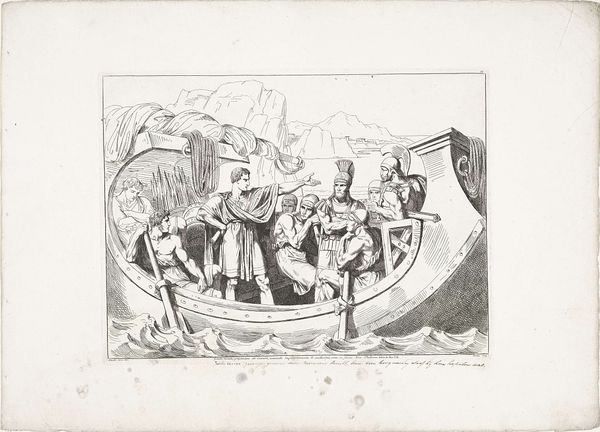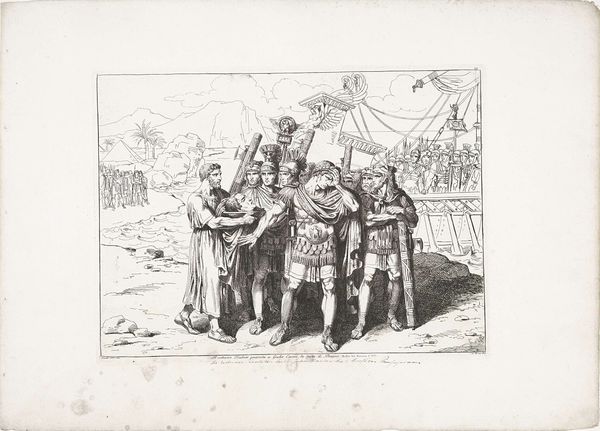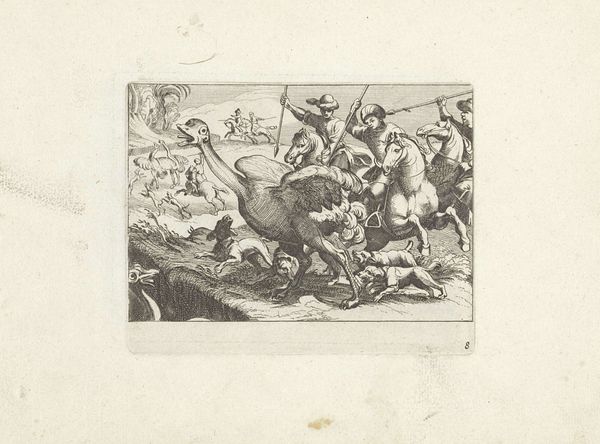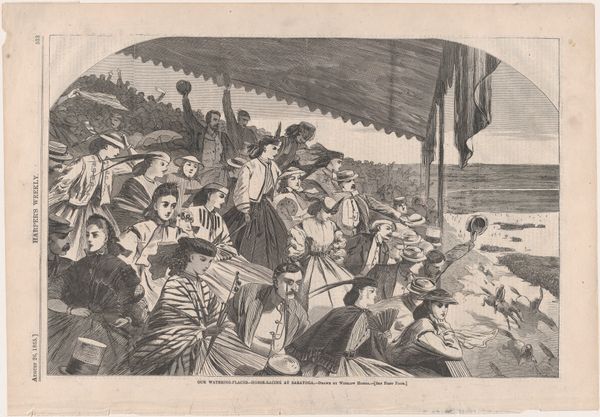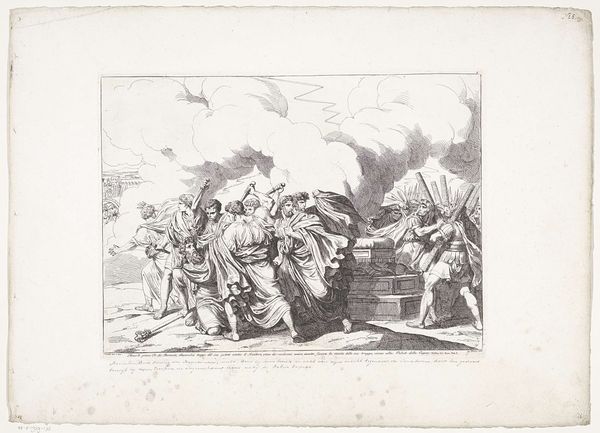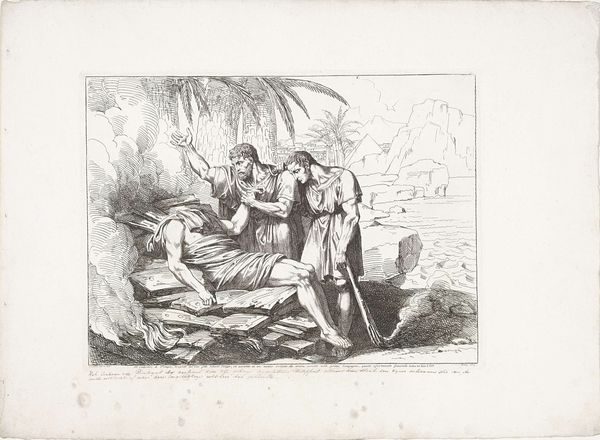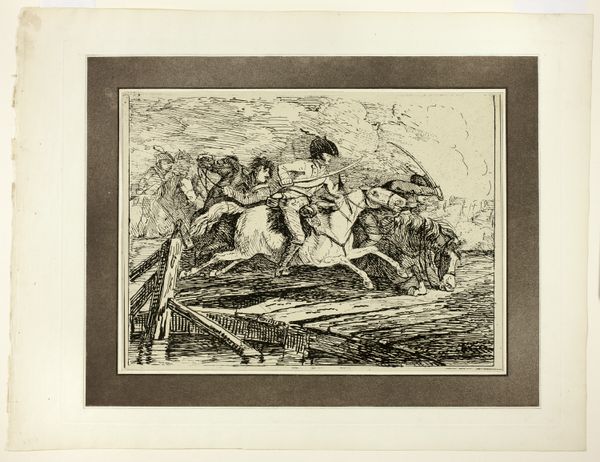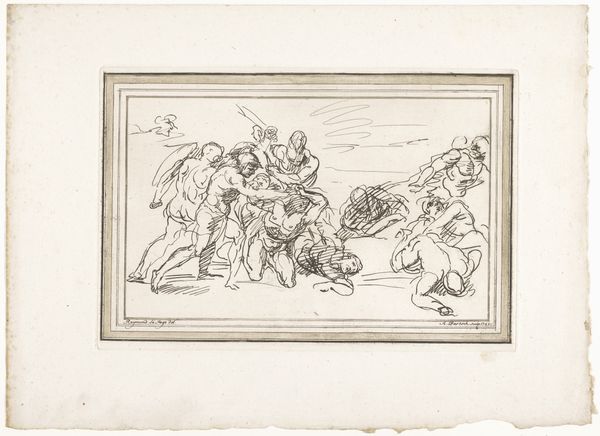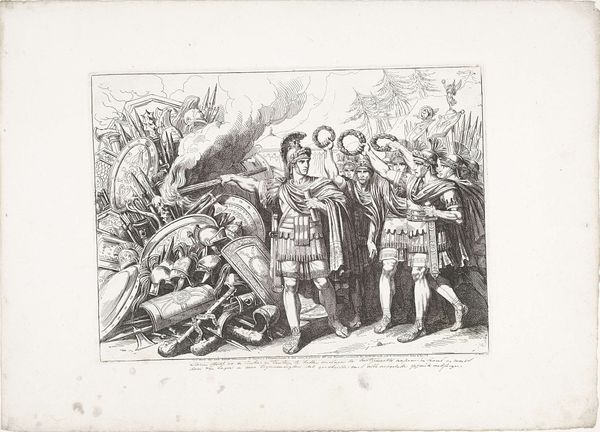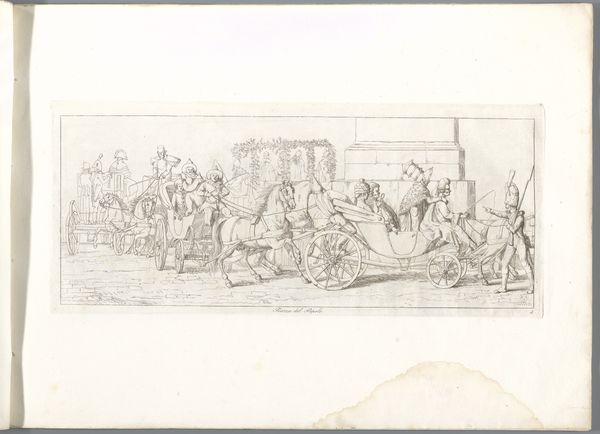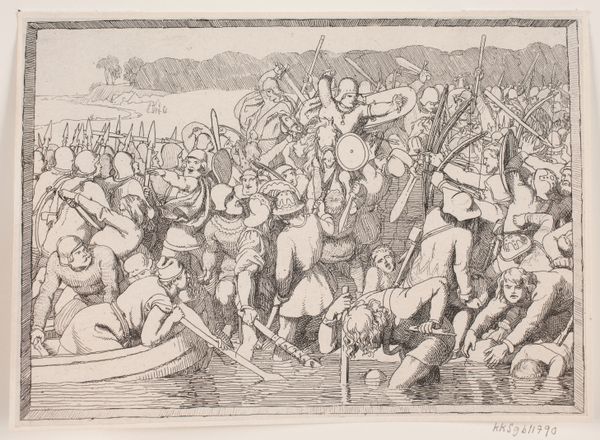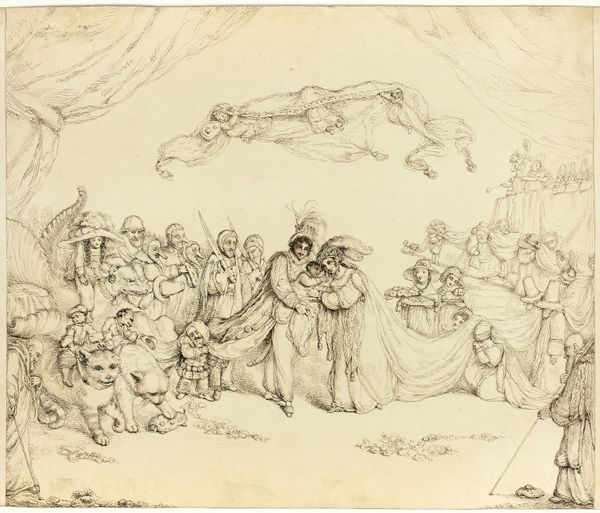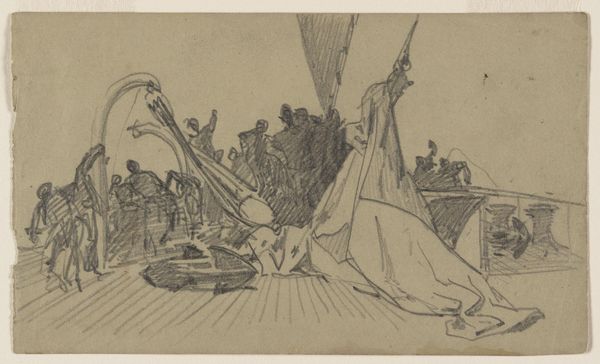
drawing, ink, pen, engraving
#
drawing
#
ink drawing
#
pen sketch
#
ink
#
pen
#
history-painting
#
engraving
Dimensions: height 314 mm, width 424 mm
Copyright: Rijks Museum: Open Domain
Curator: What a dynamic drawing! The composition bursts with the violence it depicts, but also, strangely, there's a classical calm about it. Editor: Precisely! The artist, Bartolomeo Pinelli, working roughly between 1791 and 1835, captures a pivotal historical moment: "The Murder of Pompey." The linear precision suggests an engraving process, meticulously reproduced, which speaks volumes about the materials available, particularly the pen and ink, common to the era's graphic storytelling. Curator: It’s brutal! You've got Pompey in the center, about to be struck down, seemingly betrayed as his small boat approaches, with everyone seemingly complicit on the shore. Did Pinelli make a statement about power, about the political tensions of the time, through a lens to this older betrayal? It's interesting seeing history recycled like that, I mean both then and now. Editor: Absolutely, this isn't just history; it's history serving the present. The availability of cheap prints ensured a wide consumption of such narratives, democratizing art in a sense. Engravings, pen sketches and ink drawings were also a staple of news and propaganda during revolutionary periods... but Pinelli was conservative in outlook, no? He's telling the story straight in this instance: material choices shape ideological consumption, echoing through time. Curator: The details—those palm trees behind the massacre – almost seem indifferent to it all. It lends such an odd feel. Editor: Note how the landscape functions as a silent witness; and how this event echoes through art-history. The level of craft itself speaks to labor practices and systems. Curator: Makes you wonder, doesn't it? What kind of stories are etched—or printed, mass produced or whatever else – in our time? It’s grim and gorgeous, this piece, simultaneously. Editor: I'd say the convergence of those details – Pompey, print culture, social upheaval, artistic expression — really crystallizes the enduring power of such art to inform our interpretations. It is not a singular vision. It is history itself, imprinted through material circumstances of labour into form, waiting to be rediscovered over and over.
Comments
No comments
Be the first to comment and join the conversation on the ultimate creative platform.
